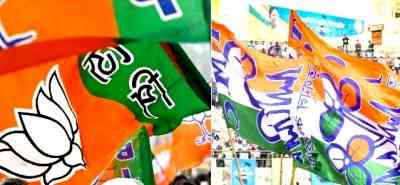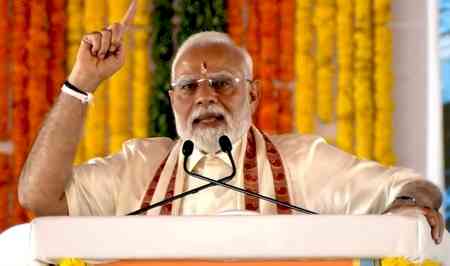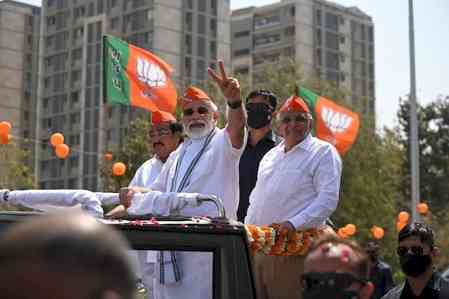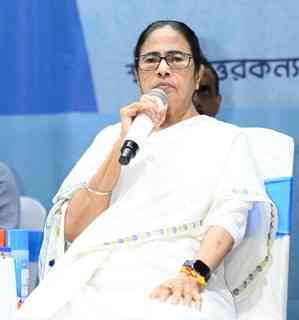BJP’s progressive growth in vote share across Bengal a concern for TMC
The progressive growth in the BJP’s vote share in West Bengal since the 2009 Lok Sabha elections could be a major concern for the ruling Trinamool Congress.

Kolkata, April 13 (IANS) The progressive growth in the BJP’s vote share in West Bengal since the 2009 Lok Sabha elections could be a major concern for the ruling Trinamool Congress.
This is because even a marginal addition in the BJP’s vote share can result in a fall in the number of seats for the ruling party.
This statistical progression in the vote share of the BJP is across the 42 Lok Sabha constituencies in West Bengal and is not limited to a few pockets.
This would mean consolidation of the anti-incumbency votes in one kitty as opposed to being scattered among multiple Opposition forces.
The following statistics will give a clear picture of this consolidation which is worrying the Trinamool and the Congress-Left combine.
As per the records of the office of the West Bengal Chief Electoral Officer (CEO) in the 2019 Lok Sabha polls, the BJP secured a total of 23,027,517 votes, showing an upward swing in the vote share by 22.76 percentage points over the 2014 General Election results.
The party was able to increase its seat tally by nine times to 18 from just two in the 2014 Lok Sabha polls.
In 2019, the constituency in which the increase in the BJP’s vote share was minimum was Baharampur in Murshidabad District where the growth figure was just 3.9 percentage points.
Baharampur continues to be a stronghold of the Congress with the party’s state President Adhir Ranjan Chowdhury being the sitting five-time MP.
On the other hand, the party’s vote share growth was maximum in Purulia, where the figure was 42.15 percentage points.
This comparative statistics is a major concern for Trinamool Congress as Puralia virtually became an open field for the ruling party since the 2011 Assembly elections which witnessed the end of the 34-year Left Front rule.
The increase in the BJP’s vote share by 10.9 percentage points from what it was in 2009 began in the 2014 Lok Sabha polls, when it secured a total of 8,691,765 votes and doubled its seat tally to two from one.
Significantly, the BJP’s vote share growth was despite a highly-unstructured organisational base of the party in West Bengal.
In both the general elections the focus of the central leadership of the BJP was much less on West Bengal than what it is this time, with the Prime Minister already having addressed many rallies in the state.
Some additional factors are working in favour of the BJP in West Bengal this time. The state is going for polls under the shadow of the ongoing investigations by the CBI, ED and NIA on various cases of corruption, which was not so in 2019 or 2014.
A number of top Trinamool Congress leaders, including two heavyweight ministers, who were the pillars of the party’s organisational base are currently behind bars.
Plus, till 2019 the ruling party really did not have to confront any vociferous face of Opposition in the state. The void has now been filled by the current Leader of Opposition in West Bengal Assembly, Suvendu Adhikari.
Finally, during the last five years, the BJP has been able to streamline its organisational network across the state.
So further improvement in the BJP’s vote share in West Bengal cannot be ruled out, which in turn can result in a dent in the number of seats of the ruling party.
--IANS
src/rad


 IANS
IANS 








